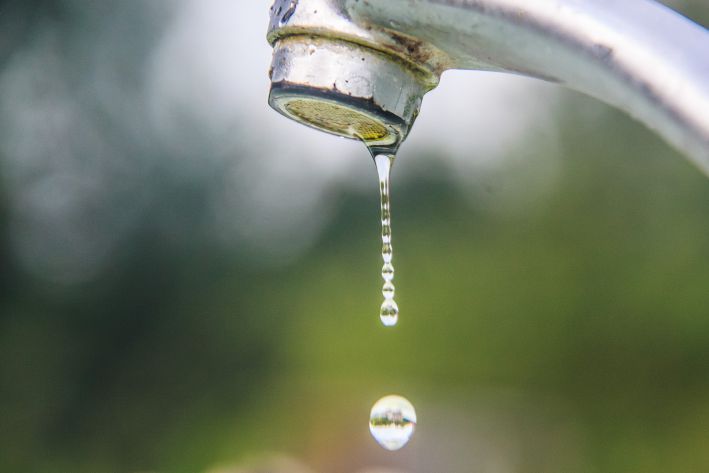How to Save Water at Home: Useful Tips for the Family Budget
Saving energy, water or food is an important topic everywhere we look.
Unfortunately, the future does not look very optimistic, and each of us must manage this life-giving liquid as best as possible. How to save water?
Water, the most important raw material
Water is such an important resource that we cannot do without it. Unfortunately, it is also a resource that cannot be replaced.
And since water, especially drinking water, is constantly decreasing in nature, we must urgently find a way to preserve it so that it remains for future generations. Therefore, saving water is a priority for all developed civilizations.
When water becomes really scarce, the entire ecosystem will gradually disintegrate. Without water, plants and animals will die. Many of you may think that you are saving water and that is all you can do to save the planet. However, you may be surprised at how we can save water even more effectively so that it is not wasted.

Replace your bathtub with a shower stall
Can you imagine how much water we waste if we fill a full bathtub every day? And that many people have no idea how big their bathtub is?
An empty bathtub usually has a volume of 110 to 150 liters, and some corner and atypical bathtubs have even more. Of course, we do not fill the bathtub completely, because, according to Archimedes' law, we would have to wipe the excess from the floor, but it still turns out to be about 50 liters of water.
When taking a shower, about 10 liters of water flows out of the shower head. If we are really thrifty and do not turn on the shower for the entire time of washing, we save a really significant percentage of water.
In addition, we take care of our body, since human skin does not benefit from prolonged exposure to warm water.
Don't let water run unnecessarily: This applies not only to taking a shower, but also to washing dishes and hands in the sink. Don't let water run unnecessarily when you are doing personal hygiene. Up to 20 liters of water per minute flows unnecessarily from the tap.
Turn on the washing machine when it is full
Do you know how many kg of laundry your washing machine can hold in one wash?
If you want to save money, prepare equal-sized piles of laundry according to the capacity of your washing machine and wash to fill the drum.
Throwing two towels in the washing machine just because you need to wash them is not smart. Also, choose a washing machine that uses less water.
Buy a device with a convenient flush
Old toilets are not very efficient. Combination toilets have an energy-saving flush system that saves water.
An economical toilet flush system that you can choose will teach you to save. After all, it doesn’t matter whether you flush 3 or 6 liters of water.
Try buying a dishwasher
You won't believe how much water you waste when you wash dishes in the sink and rinse them under running water. More efficient dishwashers only require 9 litres of water per wash, which can save you a lot of water and money.
Washing dishes under running water uses 3 times more water than washing in a sink. When buying a dishwasher, pay attention to water consumption and always buy dishwashers with economical water consumption.
Do not pour out the settled water
You boiled water for coffee and there is some left in the kettle? Don't throw it away. Pour the water into a plastic bottle or watering can (after it cools down, of course) and use it to water your houseplants. You can also use it to rinse your hands, flush the toilet, or mop the floor.
Aerator
Typically the part of a faucet that provides aeration and a continuous flow of water at the end of the faucet. Economical aerators restrict the flow in various ways to create a powerful stream with less flow and therefore less water consumption.
They are installed at the end of the tap where, like water saving devices, they mix the water flow with air.
This process gives the water additional volume and, thanks to smaller flow holes, increases the speed of the water and gives it additional force. The water-saving aerator reduces water consumption to 6 liters per minute.
Economical shower head
The purpose of these shower heads is to limit the flow of water using turbine technology, and the restriction of the water flow does not affect the quality and efficiency of the shower.
An energy-saving shower head will help you save water when taking a shower every day, on average up to 70% compared to a conventional shower head.
Water saving: works by mixing the water and air flow. The result is a pleasant stream of water, full of air bubbles, which cleans just as well and saves water.
Water-saving filters only need to be installed, after which they will work completely autonomously, and we will only have to clean them from time to time.
Use rainwater
Rainwater is not what we are used to seeing - almost the entire periodic table of chemical elements can be found in a single drop of rain.
Rainwater is a liquid that should not be allowed to run down drains and seep into the soil unchecked. If you own a home, consider purchasing a rainwater collector.
It will serve you not only for watering the garden, but you can also use it at home.
Did you know that rainwater can be used to wash clothes, mop floors, flush toilets, and water houseplants (and they will thank you for the rainwater)? This will save you a lot of money on your water and sewer bills.
Previously, we talked about how to play with light in a small apartment to make it seem more spacious.
